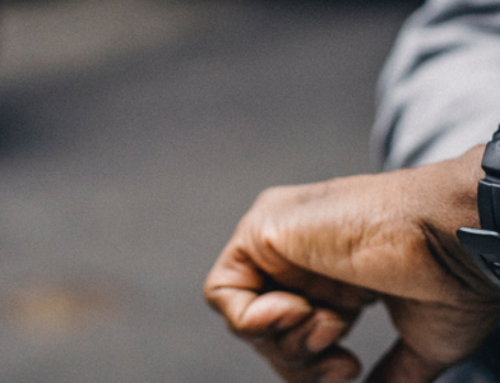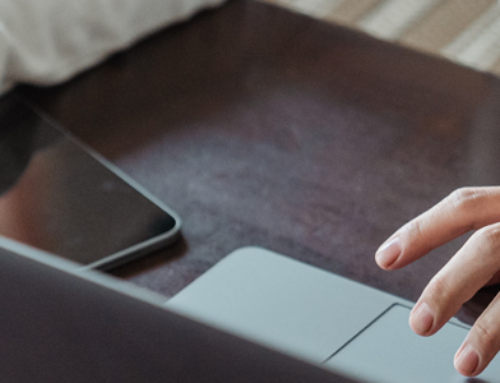Breathing… always remember to breathe. Take time to inhale. It’s the simplest thing, but is forgotten in panic attacks.
Don’t wait until fight-or-flight kicks in before minding the breath. Controlled breathing not only keeps your mind and body functioning at their best, it can also lower blood pressure, promote feelings of calm and relaxation, and help you de-stress.
Breathing exercises are not only for those who suffer from anxiety attacks, feeling over-worked, under-slept, under pressure…. There are plenty of ways to find calm—without investing in a 90-minute massage. Turns out all you need is a pair of healthy lungs, your breath, and 10 minutes or less.
This short and powerful breathing exercise will help you to quiet your mind. This is a simple technique that you can repeat it as a daily exercise and during anxiety attack.
Breathing… always remember to breathe. Take time to inhale. It’s the simplest thing but is forgotten in panic attacks.
Don’t wait until fight-or-flight kicks in before minding the breath. Controlled breathing not only keeps your mind and body functioning at their best, but it can also lower blood pressure, promote feelings of calm and relaxation, and help you de-stress.
Breathing exercises are not only for those who suffer from anxiety attacks, feeling over-worked, under-slept, under pressure…. There are plenty of ways to find calm—without investing in a 90-minute massage. Turns out all you need is a pair of healthy lungs, your breath, and 10 minutes or less.
Get your day on track in five minutes.
Feeling tense or anxious? Stressed? Get your day back on track in five minutes while watching this breathing exercise video. Just match your breathing to the image as it grows and shrinks in size, and in five minutes, your blood pressure and pulse rate will be lower, and your body will feel relaxed and focused again.
This short and powerful breathing exercise will help you to quiet your mind. This is a simple technique that you can repeat it as a daily exercise and during anxiety attack.
Get your day on track in five minutes.
Feeling tense or anxious? Stressed? Get your day back on track in five minutes while watching this breathing exercise video. Just match your breathing to the image as it grows and shrinks in size, and in five minutes, your blood pressure and pulse rate will be lower, and your body will feel relaxed and focused again.
Music by audionautix.com, Voice provided by Margaret Hawkins for No Panic.
Relax Mind Body & Soul
Regular relaxation can help reduce the occurrence of panic attacks along with cognitive behavioural therapy.
” Pure Clean Positive Energy Vibration” Meditation Music, Healing Music, Relax Mind Body & Soul
More Breathing Exercises to Relax in 10 Minutes or Less
Here are six expert-approved ways to relax using breathing techniques borrowed from yoga, meditation, and even the therapist’s chair.
The Need-to-Know
Controlled breathing not only keeps your mind and body functioning at their best, it can also lower blood pressure, promote feelings of calm and relaxation, and help you de-stress.
Your Action Plan
From the confines of a bed, a desk, or anywhere negativity finds its way, consider these six techniques to help keep calm and carry on.
- Sama Vritti or “Equal Breathing”
How it’s done: To start, inhale for a count of four, then exhale for a count of four (all through the nose, which adds a natural resistance to the breath). Got the basic pranayama down? More advanced yogis can aim for six to eight counts per breath with the same goal in mind: Calm the nervous system, increase focus, and reduce stress…
When it works best: Anytime, anyplace—but this is one technique that’s especially effective before bed. “Similar to counting sheep, if you’re having trouble falling asleep, this breath can help take your mind off the racing thoughts, or whatever might be distracting you,” Pacheco says.
Level of difficulty: Beginner
- Abdominal Breathing Technique
How it’s done: With one hand on the chest and the other on the belly, take a deep breath in through the nose, ensuring the diaphragm (not the chest) inflates with enough air to create a stretch in the lungs. The goal: Six to 10 deep, slow breaths per minute for 10 minutes each day to experience immediate reductions to heart rate and blood pressure. Keep at it for six to eight weeks, and those benefits might stick around even longer.
When it works best: Before an exam or any stressful event. But keep in mind. Those who operate in a stressed state all the time might be a little shocked how hard it is to control the breath.
Level of difficulty: Beginner
- Progressive Relaxation
How it’s done: To reduce tension from head to toe, close the eyes and focus on tensing and relaxing each muscle group for two to three seconds each. Start with the feet and toes, then move up to the knees, thighs, glutes, chest, arms, hands, neck, jaw, and eyes—all while maintaining deep, slow breaths. Having trouble staying on track? Anxiety and panic specialist Dr. Patricia Farrell suggests we breathe in through the nose, hold for a count of five while the muscles tense, then breathe out through the mouth on release.
When it works best: At home, at a desk, or even on the road.
Level of difficulty: Beginner
- Nadi Shodhana or “Alternate Nostril Breathing”
How it’s done: A yogi’s best friend, this breath is said to bring calm, balance, and unite the right and left sides of the brain. Starting in a comfortable meditative pose, hold the right thumb over the right nostril and inhale deeply through the left nostril. At the peak of inhalation, close off the left nostril with the ring finger, then exhale through the right nostril. Continue the pattern, inhaling through the right nostril, closing it off with the right thumb, and exhaling through the left nostril.
When it works best: Crunch time, or whenever it’s time to focus or energize. Just don’t try this one before bed: Nadi shodhana is said to “clear the channels” and make people feel more awake. “It’s almost like a cup of coffee,” Pacheco says.
Level of difficulty: Intermediate
- Guided Visualization
How it’s done: Head straight for your happy place, no questions asked. With a coach, therapist, or helpful recording as your guide, breathe deeply while focusing on pleasant, positive images to replace any negative thoughts. Psychologist Dr. Ellen Langer explains that while it’s just one means of achieving mindfulness, “Guided visualization helps puts you in the place you want to be, rather than letting your mind go to the internal dialogue that is stressful.”
When it works best: Pretty much any place you can safely close your eyes and let go (e.g., not at the wheel of a car).
Level of difficulty: Intermediate.
- Kapalabhati or “Skull Shining Breath”
How it’s done: Ready to brighten up your day from the inside out? This one begins with a long, slow inhale, followed by a quick, powerful exhale generated from the lower belly. Once comfortable with the contraction, up the pace to one inhale-exhale (all through the nose) every one to two seconds, for a total of 10 breaths.
When it works best: When it’s time to wake up or start looking on the bright side. “It’s pretty abdominal-intensive,” Pacheco says, “but it will warm up the body, shake off stale energy, and wake up the brain.” If alternate nostril breathing is like coffee, consider this a shot of espresso, she says.
Level of difficulty: Advanced
While stress, frustration, and other daily setbacks will always be there, the good news is, so will our breath.





